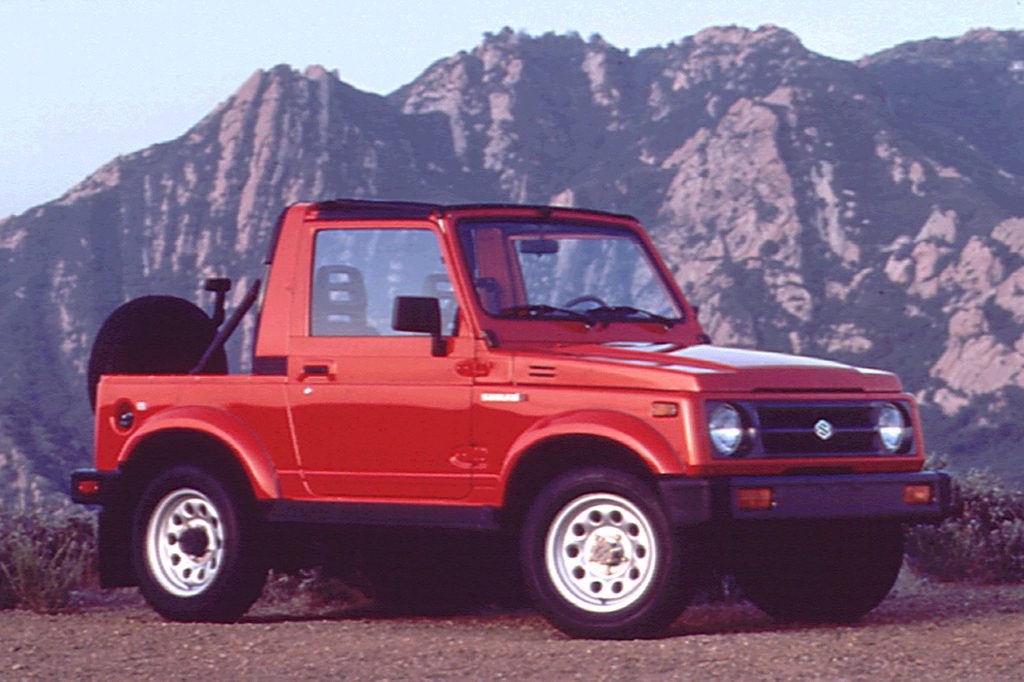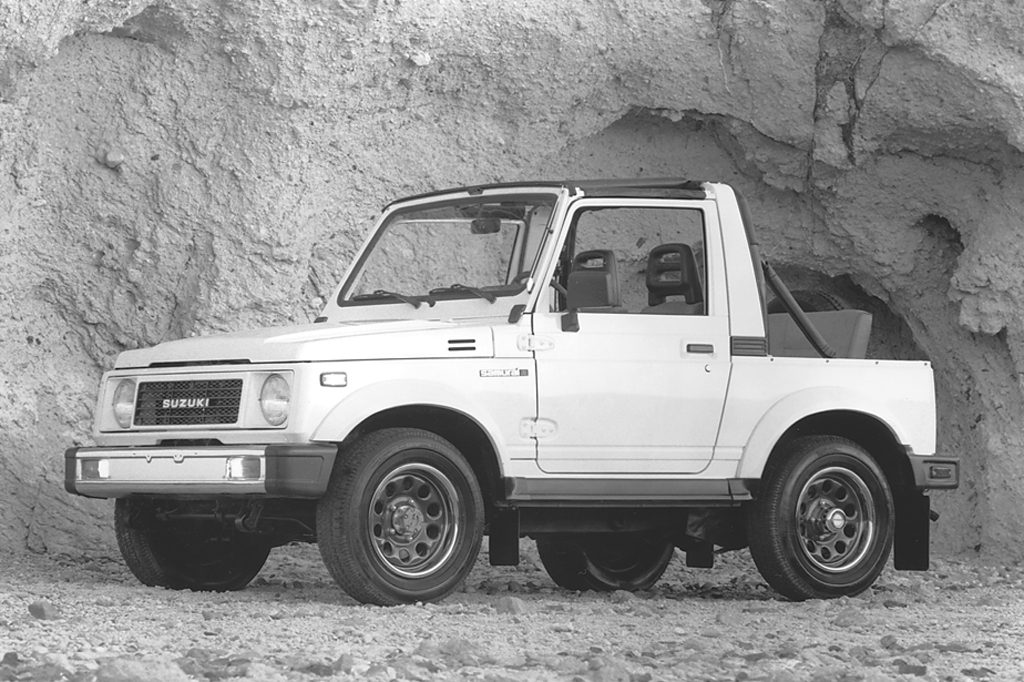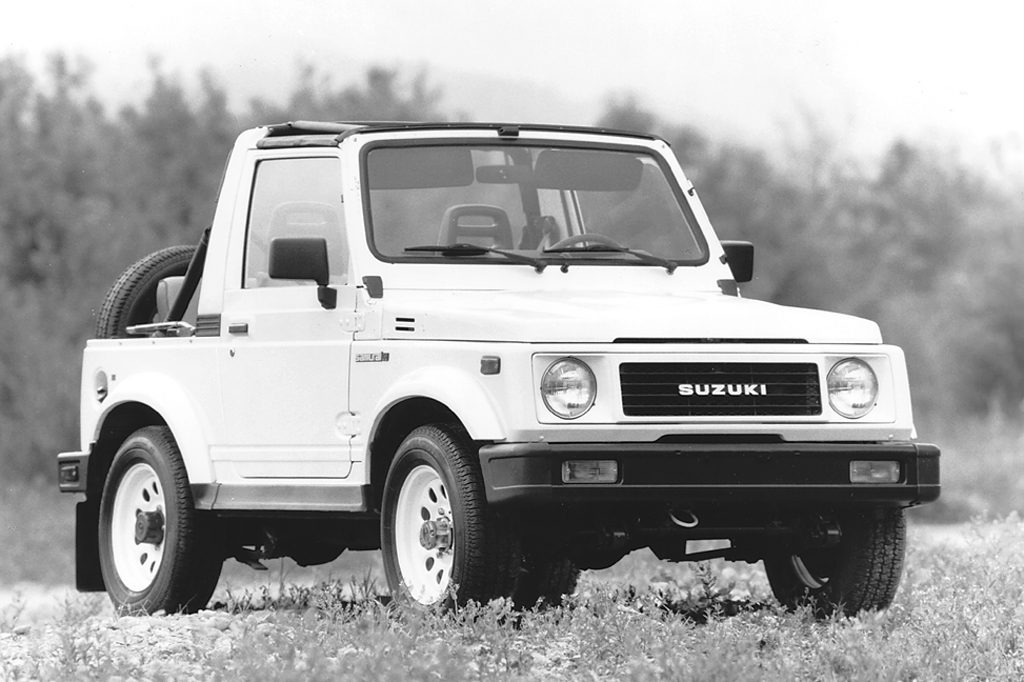| Compact SUV; Built in Japan |
|
|
| Good condition price range: $1,000 – $2,000* |

1993 Suzuki Samurai

1994 Suzuki Samurai

1995 Suzuki Samurai

1990 Suzuki Samurai

1991 Suzuki Samurai
| Pros: |
|
| Cons: |
|
Though cute and cheap, Samurai is simply too small, underpowered, and unrefined to serve as real transportation.
Overview
Introduced for 1986, it was not until 1989 that the sport-utility vehicle was on sale across the country, as either a convertible or a fixed-roof hardtop. The slow-selling hardtop was dropped after 1989, leaving only the convertible, in a single price level. Switching from carburetion to fuel injection for 1990, the 66 horsepower 1.3-liter engine came only with a 5-speed manual transmission. An on-demand, part-time 4WD system was standard. Manual-locking front hubs also were standard, but dealers could install automatic-locking hubs.
Yearly Updates
| 1991 Samurai A pair of two-wheel-drive models arrived for 1991, led by the JA. The JA came without a top or rear seat, while the JS added a folding soft top and 2-place rear seat. |
| 1992 Samurai The 2-wheel-drive JS model dropped out, leaving only the 2WD JA and 4WD JL models. |
| 1993 Samurai Nothing was new for 1993 in Suzuki’s smallest sport-utility vehicle. |
| 1994 Samurai Only 4WD remained after ’93, as the two-wheel-drive model dropped out. The remaining Samurai came with a canvas top, and added a center high-mounted stoplamp. |
| 1995 Samurai Only a 2-door convertible body style with 4-wheel drive returned for 1995, Samurai’s final season. |
